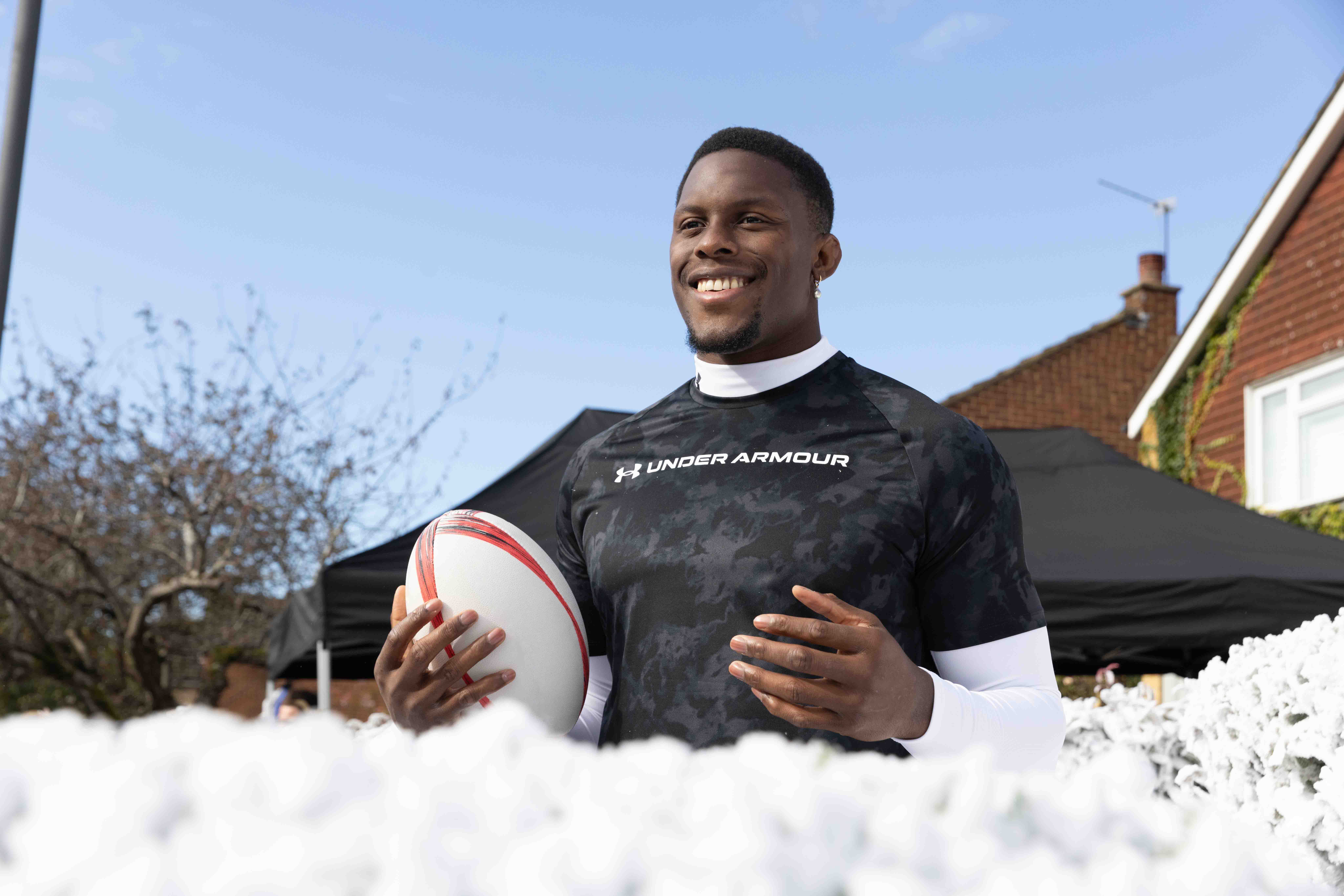
I stood next to Maro Itoje once, and it was a humbling experience. In the hunt for a pre-match snack before Saracens vs Gloucester, I somehow found myself in the stadium concourse engulfed by the 6ft 6in lock’s considerable shadow. He was huge, which is why I was shocked to learn his latest MO in the gym.
“My current goal is to get stronger, particularly through my lower body and in lateral agility movements,” Itoje tells me, fresh from shooting with Sports Direct for the brand’s “New Traditions Start Here” campaign.
A stronger Itoje is a terrifying prospect, particularly for his opponents, but the way he plans to make it happen is surprisingly straightforward. Rather than turning to high-tech machines and fitness fads, he’s going to lift well and lift heavy – an approach that has served rugby’s elite for decades. “I like to keep things simple,” he explains.
Below, you can find out what the Saracens star does in and out of the gym to build strength, boost performance and remain at the top of his game. Better yet, unlike certain unsustainable celebrity workout transformations, I actively encourage you to give his approach to strength training a go – just maybe not with Itoje’s weights.
What does training look like for a rugby player?
Itoje typically trains three or four times per week, splitting his time between the gym, the pitch and more. Each day starts with breakfast, followed by physio if needed, then at 9am he and the team hit the gym.
“After the gym we tend to have our forwards unit session where we go through scrums and lineouts – that’s normally at 10.15am for around an hour,” Itoje says. Lunch follows, then it’s out to the pitch for a rugby session in the afternoon.
“On Monday it’s generally a medium-intensity session. Tuesday is high-intensity, then on Thursday we have fast-paced drills at a relatively medium-intensity.”
Read more: An expert trainer recommends this three-move abs workout for building a stronger core at home
Maro Itoje’s training style
In a world of fancy exercises and fitness fads, Itoje’s no-nonsense training ethos is a breath of fresh air.
“I don’t tend to do any movements out of the ordinary,” he explains. “When you’re in the gym, it’s all about the core compound lifts and performing them well to get the best results.”
Compound lifts are exercises that recruit multiple muscle groups at once. This allows you to move larger loads than isolation exercises like biceps curls and leg extensions, making these moves an efficient and effective way to build serious strength.
“[Each week] we have one upper body focussed session, one lower body and one full body,” Itoje says. “For the upper body day, that might look like bench press and chin-ups [the 30-year-old can reportedly heave his body weight above a bar with upwards of 70kg hanging from his waist], then we’ll perform some movements in supersets.
“For the lower body, my go-to movements are squats, trap bar deadlifts, regular deadlifts, as well as single-leg movements [such as Romanian deadlifts, split squats and weighted step-ups]. We’ll also do some work on the prowler and sled.”

These workouts start with a low-rep, high-weight compound lift to build strength. The popular five by five method is his starting point, where you perform an exercise for five sets of five repetitions, resting two or more minutes between sets.
To progress this week on week, Itoje recommends slowly lowering the number of repetitions per set and increasing the weight you’re lifting as you do so. For example, you might move on to five sets of four repetitions, and later five sets of three.
Then the remainder of each workout is often performed as supersets – a time-savvy lifting technique which sees two exercises performed back-to-back with no rest in between. If you want to give this a go, try pairing two complementary moves (like a push and pull exercise for the upper body, or a hamstring and quad-dominant exercise for the lower body) and performing three supersets of eight to 10 repetitions each.
Read more: I trained like Anne Hathaway for a month, and the results surprised me
Recovery is just as important as training
Rugby is among the most physically demanding sports there is. Training to play at the top level mirrors this, so recovery is key.
“I prioritise my physical recovery by focussing on getting good quality sleep each night,” Itoje says. “I also like to use hot cold therapy, going for ice baths and saunas, as well as stretching and getting massages when I need them.”
But it’s not just physical recovery that Itoje prioritises. He also ensures he finds ways to recover mentally.
“I think people often don’t appreciate the mental side of things,” he says. “It’s important to find ways to recover mentally and make sure that you can de-stress. Often, how you feel is a big indication of how you play, so to make sure you’re in a good state mentally is important.”
Read more: Jonny Wilkinson on waking up to wellness and living each day mindfully







